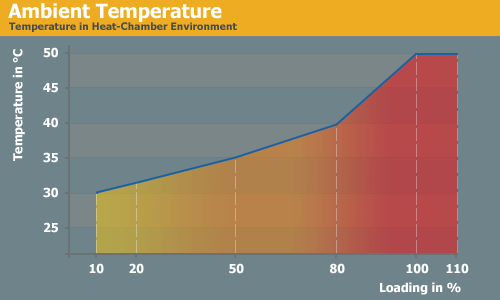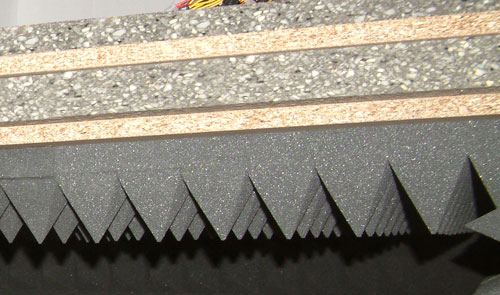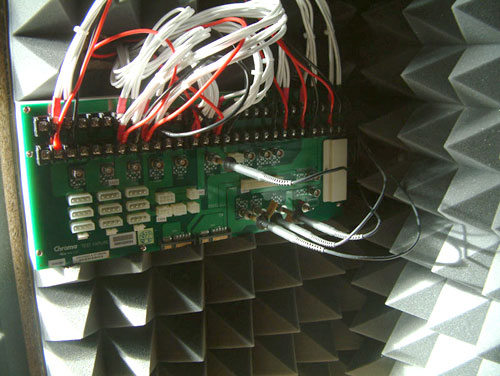Thermaltake TR2 QFan Series
by Christoph Katzer on November 19, 2008 3:00 AM EST- Posted in
- Cases/Cooling/PSUs
Testing with the Chroma ATE Programmable Load

Our test equipment consists of two Chroma programmable DC Loads that enable us to test power supplies with an output of up to 1500W. The biggest advantage of the Chroma DC Loads is simply the high precision it provides. It can measure differences as small as 0.001V and 0.0001A, which will provide us with best-in-class results.
When programming the Chroma with specific amounts of load calculated according to the ATX norm, we are able to load power supplies to an exact percentage. We can now show results at every specific percentage needed. To get the best overview of a power supply, we load each unit with 10%, 20%, 50%, 80%, 100%, and 110% of the specified output. This is easy to calculate for a 1000W power supply: the 10% load is 100W and 110% load is 1100W. Remember that this is the amount of power the PSU delivers; due to inefficiencies, a power supply will actually draw more power from the wall.
Note: If you would like to know more about our testing methodology, equipment, and environment, please read our PSU testing overview.
We have added an additional 10% on the highest load to see how the units perform with overload. This test will be performed in all future reviews. The overload test is performed at room temperature as well as under more stressful conditions; to ensure we are not too cruel to the power supplies, we will keep the ambient temperature at 50°C in the stress test. Experience shows that many units can stand the overload at room temperature but will experience problems with higher temperature and overload together. Only the best-built units will survive this.

The Testing Environment
There is one flaw in testing power supplies with programmable loads while trying to measure the sound pressure levels at the same time. Because the programmable loads get very loud, there is no chance of hearing the power supply on the test stand. In order to make accurate measurements of the noise levels we needed a way to separate the test unit and the programmable loads. Our solution was to build a very thick box around the unit.

We concluded that a five-layer box with a total thickness of 6" (15cm) containing two layers of wood and three layers of special foam would suffice. It is designed as a box within a box. The inner box does not touch any part of the outer box, making it difficult for acoustic noise to pass through in the form of vibration. Each box is isolated on both sides with a layer of heavy foam that is normally used to insulate engines. On the inside we have an additional layer of 4" (10cm) thick pyramidal foam on every side of the box to eliminate the acoustic waves coming from the test object as well as we can.

To ensure a completely closed system we installed the printed circuit board that the connectors of the power supply are attached to inside the anechoic room/box. In other box designs, you would need to put all the cables through the wall. Unfortunately, that would result in the inside of the box not being fully isolated anymore. Our design keeps everything that needs to be connected inside of the box and maintains isolation.










36 Comments
View All Comments
CEO Ballmer - Wednesday, November 19, 2008 - link
I like this, I'll have to try a few hundred!http://fakesteveballmer.blogspot.com">http://fakesteveballmer.blogspot.com
JonnyDough - Thursday, November 20, 2008 - link
Can you ban this user's IP please? He keeps spamming over at Tom's Hardware also.strikeback03 - Friday, November 21, 2008 - link
If they want to keep spamming, they can just get a new IP.phreax9802 - Wednesday, November 19, 2008 - link
Only one 6-pin PEG connector? Come on..this is 2008! My old Enermax FMA II 460W has two of them..fic2 - Wednesday, November 19, 2008 - link
You measured that the secondary heat sink temp reached 80 degrees. How hard would it be for a user to replace the secondary with a larger heat sink? How hard would it be to find an appropriate heat sink for this? I looked on the internals pictures but couldn't find anything that I thought looked like a heat sink except maybe what looked like separator walls.ggathagan - Wednesday, November 19, 2008 - link
Regardless of how hard or easy it is, replacing the heatsink would void the warranty.It also misses the point: The manufacturer should be supplying the appropriate heatsink in a properly designed PSU. If they don't, why should I buy it?
sam187 - Wednesday, November 19, 2008 - link
Hallo Christoph,danke fuer deine ausfuehrlichen Reviews auch mal aus der Heimat ;-)
First, it would be nice to see a comparison in the 300-500W range. Next to that, please take a look at things like the picoPSU. Are they that much more efficient than normal psus and do they meet the demands for current htpc platforms (g45/780g/nv9300 with a small cpu)?
Sascha
Hamburg, Germany
haplo602 - Wednesday, November 19, 2008 - link
Thanks for the review. I'd like to see some more 350W and 450W PSUs.xaris106 - Wednesday, November 19, 2008 - link
I also think its great to review "low" wattage models. It's the biggest portion of the market, as you say in your articles, an I aggree. So thanks for reviewing this and i also hope you continue with this range of wattages. We all know that buying a high end high power model from a good brand, we will propably get a quality psu. But not so in the 300-500W range.What I would like to see is:
1) Step load tests: I would like to see how each psu handles load changes (eg a sudden 1A change). The voltage overshoots, settling times can give a lot more information about the quality of a psu.
In other words..transient response tests.
2)A review, maybe as reference of an as cheap as it gets no name psu, to see what we get more with our money spent on brand name psu.
Thanks.
Boushh - Wednesday, November 19, 2008 - link
What I would like to see is good quality sub 400 Watt modulair power supply's. These are (almost ?) impossible to find.It's a miss calculation from the manufactures that people will not pay more for these units. Many people who employ sub 400 watt units do this because they don't need more, and because it will have to fit into a smaller case. Then all those cables are just in the way, because they will not be used.
Further more (as suggested in to article) using high quality design and materials will give better power supply's. Sure they will cost more, but I'll gladly pay that if some manufacturer would build them.
And I don't think I'm alone in this. So please manufactures, start listning to your customers !!!!!